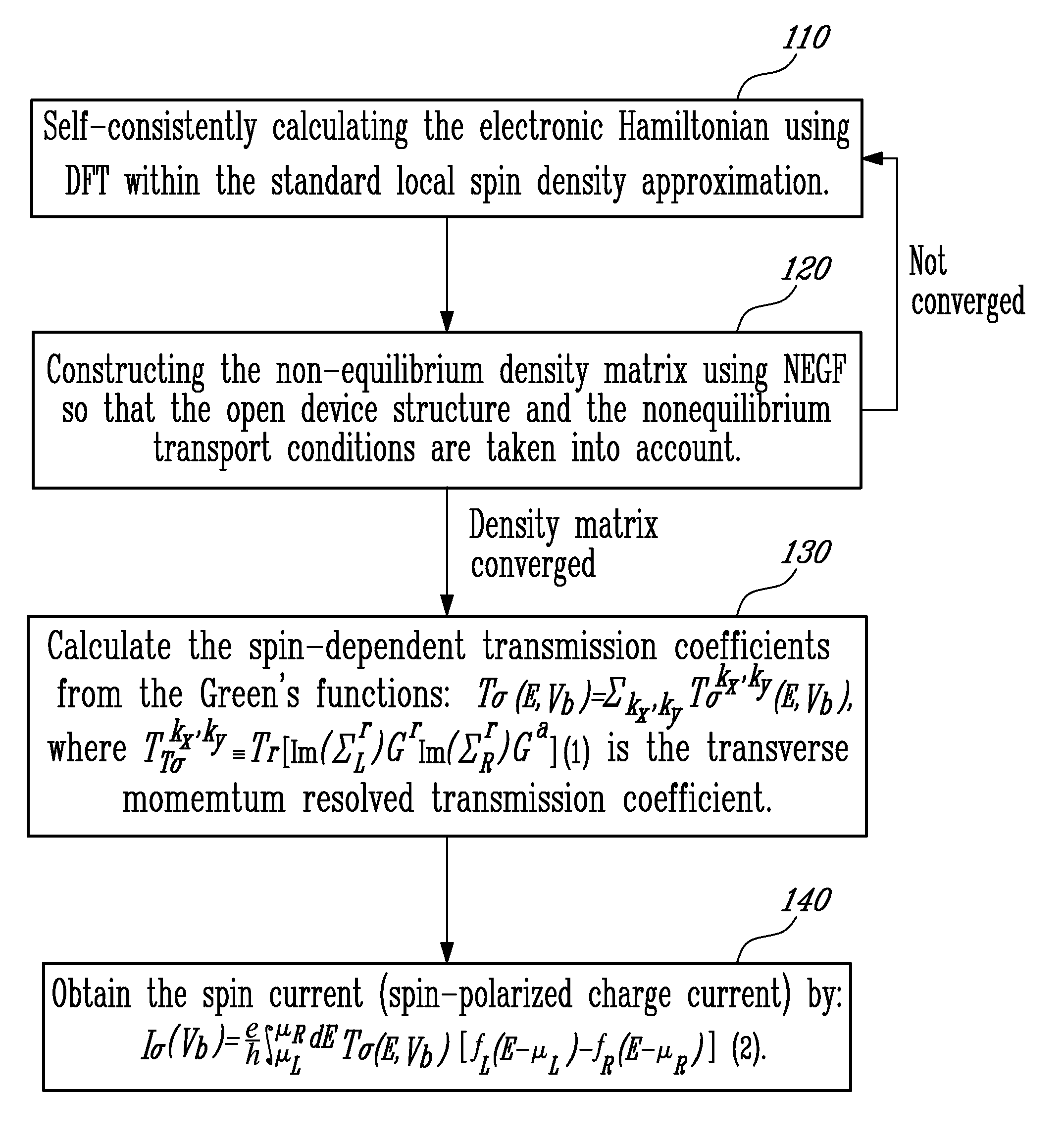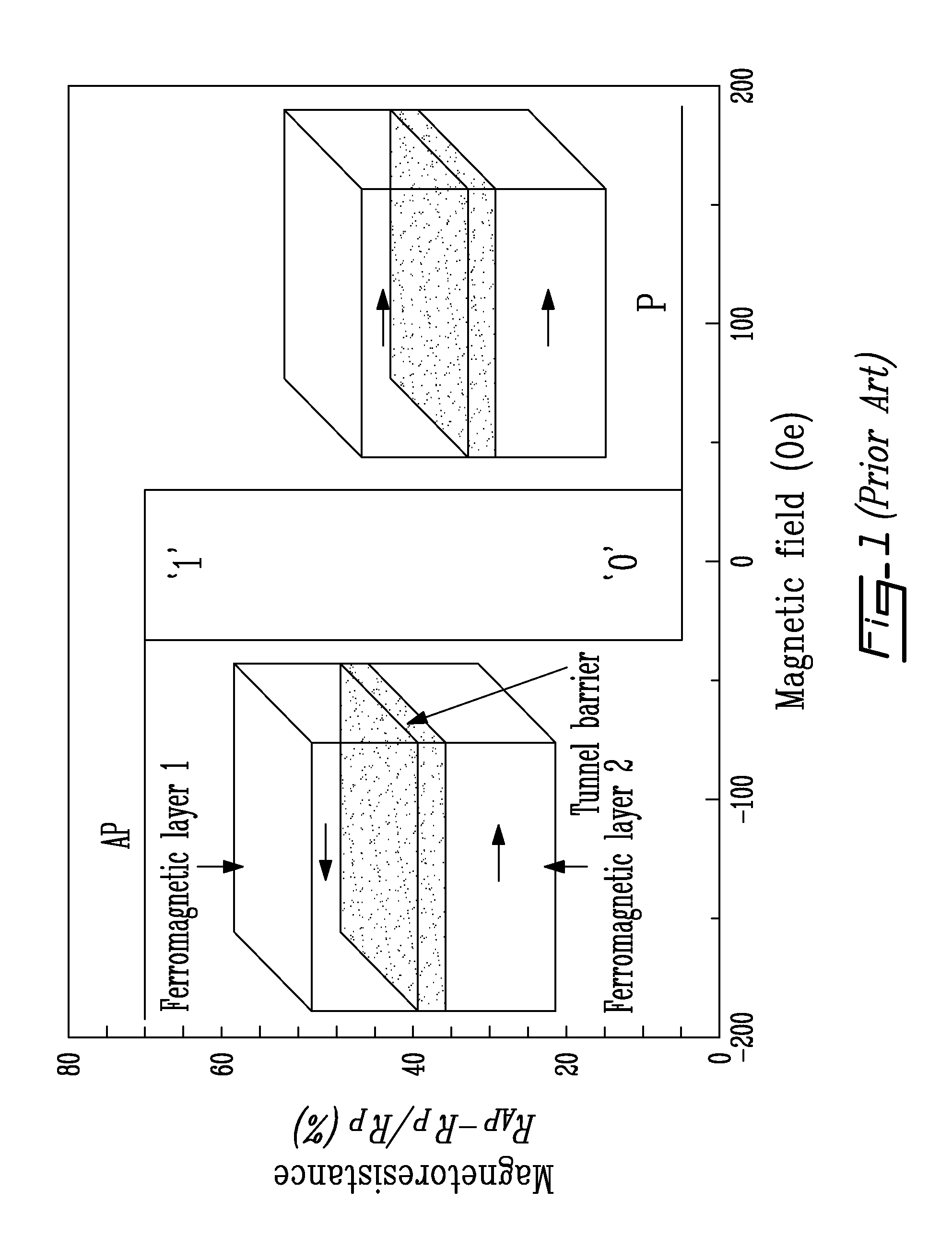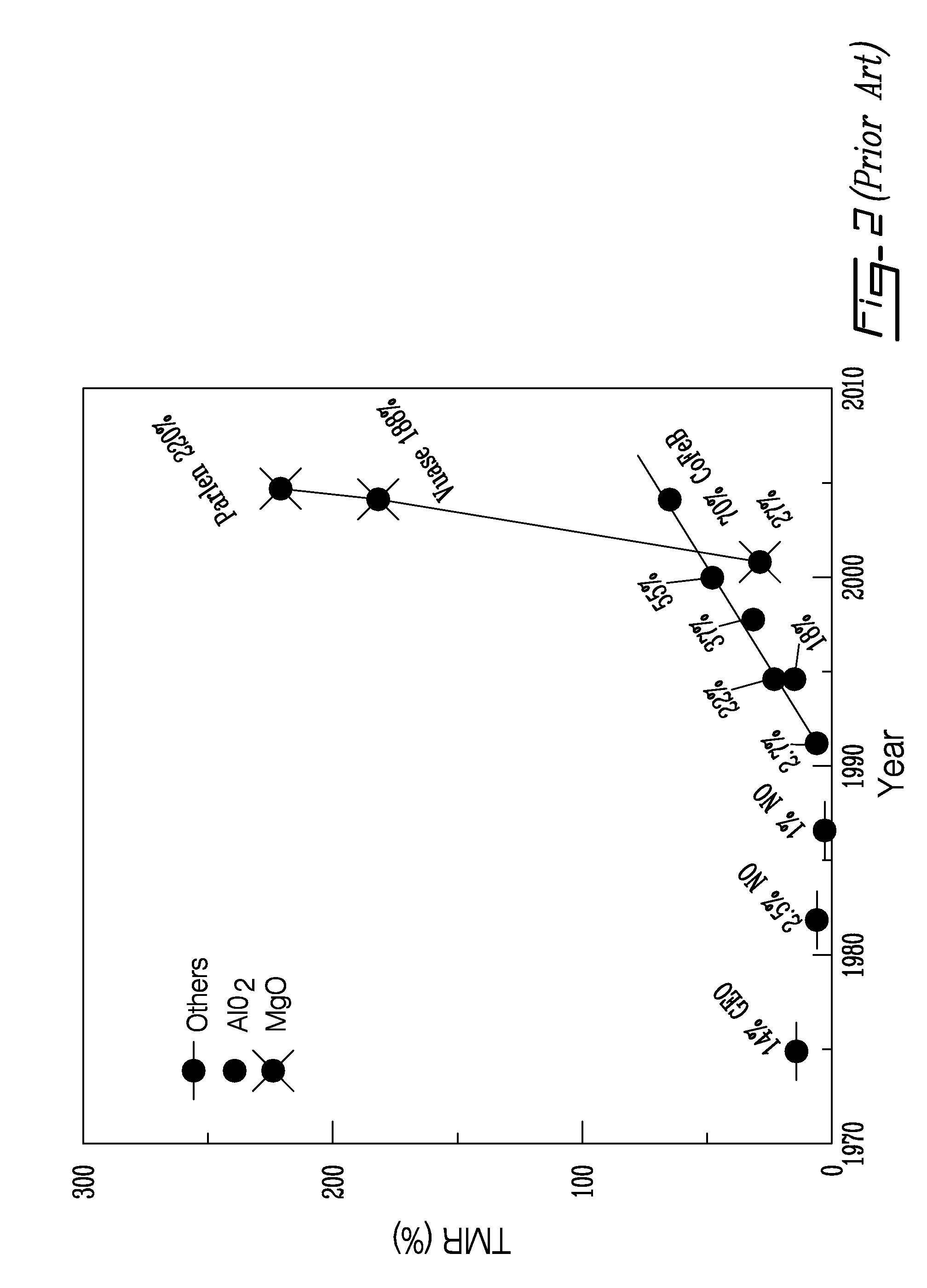Method and calculator for modeling non-equilibrium spin polarized charge transport in nano-structures
a quantum transport and calculator technology, applied in the field of atomistic quantum transport, can solve the problems of inability to demonstrate etching, patterning, etc., and the inability to integrate, and the inability to solve the reliability of spintronics devices
- Summary
- Abstract
- Description
- Claims
- Application Information
AI Technical Summary
Benefits of technology
Problems solved by technology
Method used
Image
Examples
Embodiment Construction
[0046]The present invention is illustrated in further details by the following non-limiting examples.
[0047]There is provided a method and a calculator for calculating spin polarized quantum transport in 3-dimensional nanoelectronic devices under finite bias voltage. The method and calculator perform first principles calculations of spin polarized quantum transport in 3-dimensional atomic-scale spintronics (spin electronics) devices under finite bias voltage (externally applied electric field).
[0048]Generally stated, the present method and calculator are based on implementing Density Function Theory (DFT) in combination with Keldysh non-equilibrium Green's functions (NEGF) within the Local Spin Density Approximation (LSDA) and Generalized Gradient Approximation (GGA). The local spin-density approximation (LSDA) is a generalization of the local-density approximation (LDA), in which the functional depends only on the density at the coordinate where the functional is evaluated, to inclu...
PUM
 Login to View More
Login to View More Abstract
Description
Claims
Application Information
 Login to View More
Login to View More - R&D
- Intellectual Property
- Life Sciences
- Materials
- Tech Scout
- Unparalleled Data Quality
- Higher Quality Content
- 60% Fewer Hallucinations
Browse by: Latest US Patents, China's latest patents, Technical Efficacy Thesaurus, Application Domain, Technology Topic, Popular Technical Reports.
© 2025 PatSnap. All rights reserved.Legal|Privacy policy|Modern Slavery Act Transparency Statement|Sitemap|About US| Contact US: help@patsnap.com



